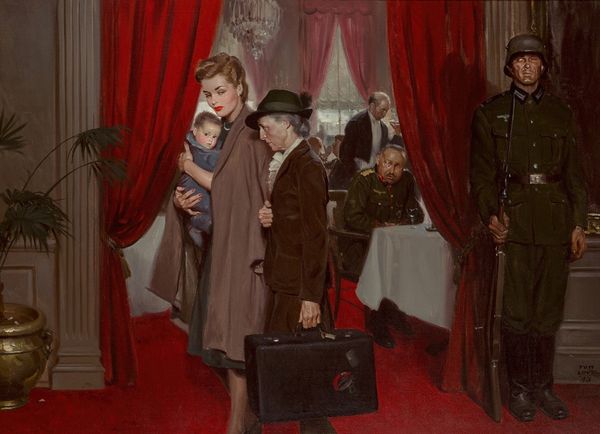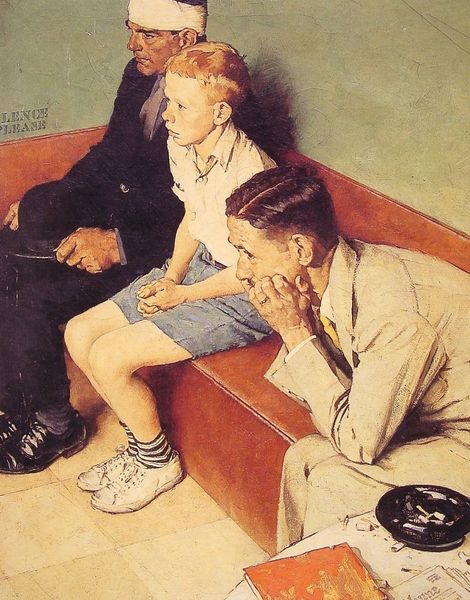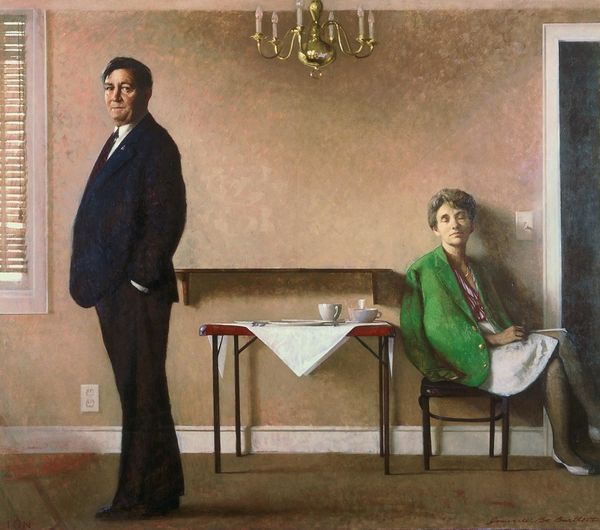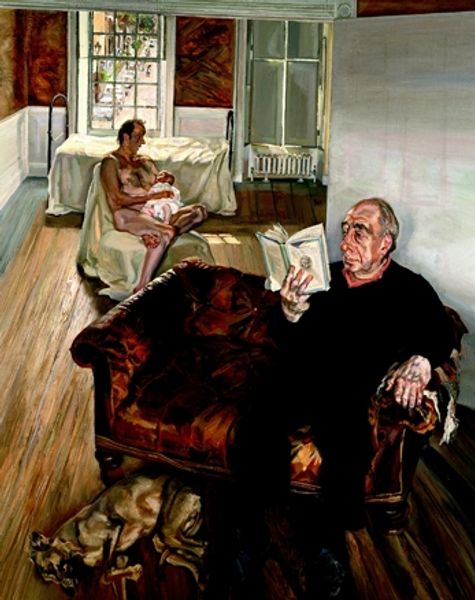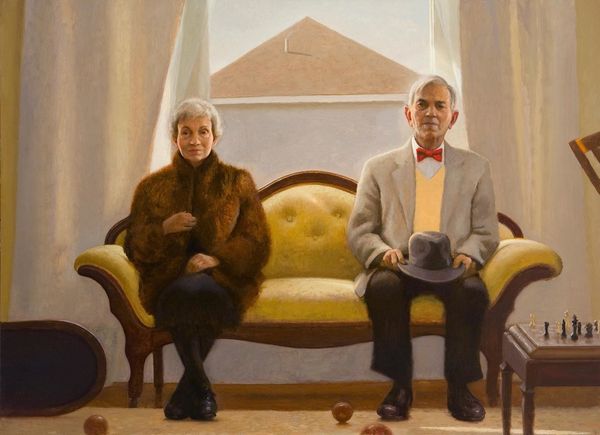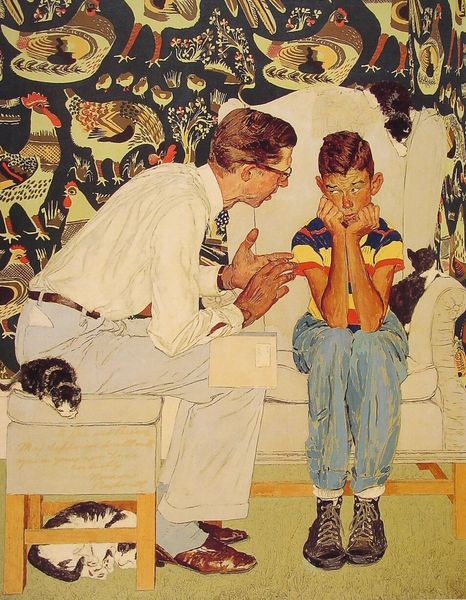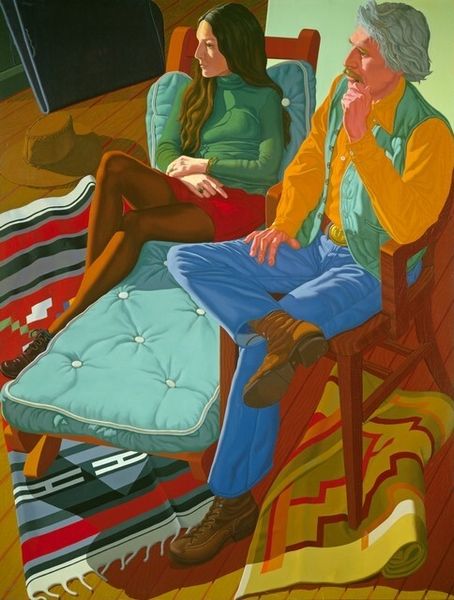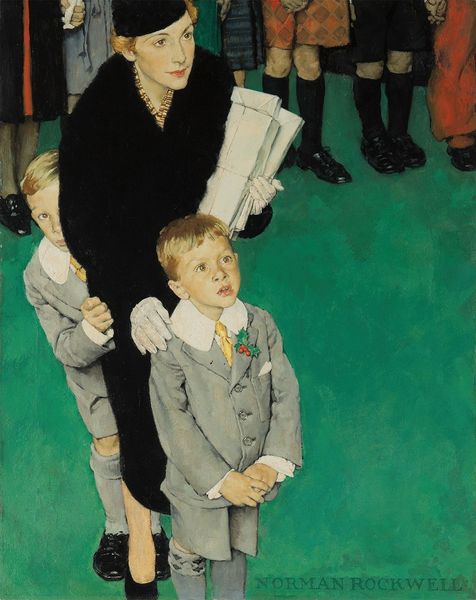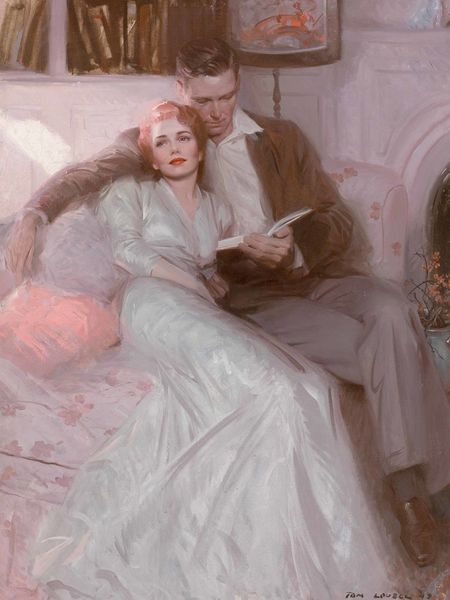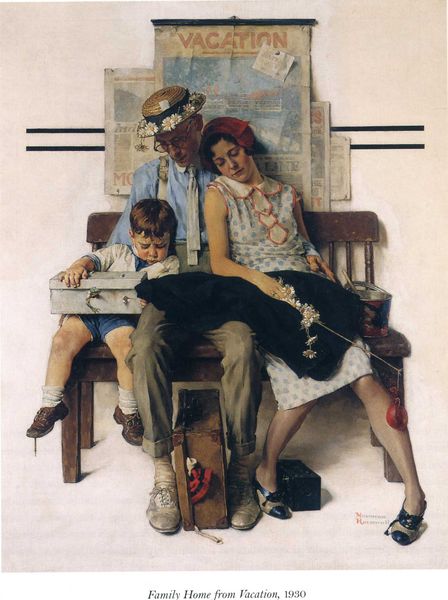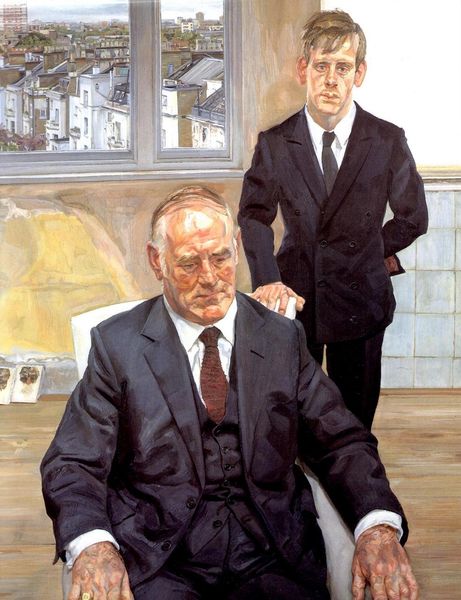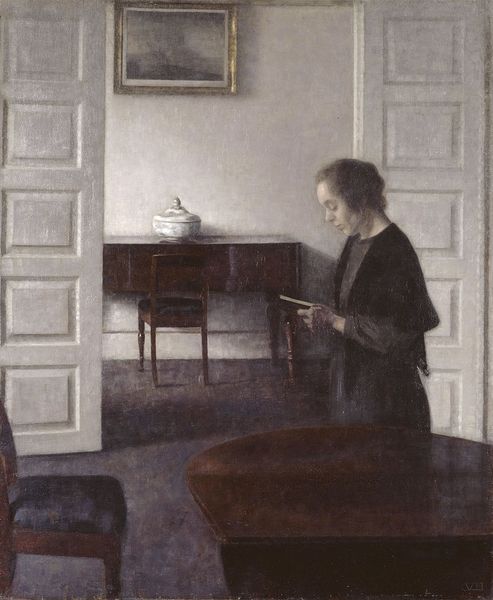
tempera, painting
#
portrait
#
tempera
#
painting
#
figuration
#
genre-painting
#
academic-art
#
modernism
#
realism
Dimensions: 85.72 x 120.02 cm
Copyright: Norman Rockwell,Fair Use
Editor: Norman Rockwell's "Second Holiday," a tempera painting from 1939, feels so weighted with unspoken stories. There's a somber stillness in the figures that just grabs me. How do you interpret the emotions conveyed by this painting? Curator: This is an acutely observed moment rendered by Rockwell. Look at how the symbolism works: an older couple sits in a doctor's waiting room. They are dressed in formal attire and, tellingly, the man holds his bowler hat. This seemingly mundane detail resonates with established cultural norms. These are people revisiting a past of higher status, even if only symbolically. Does the black-and-white tiled floor beneath them, echoing a chess board, suggest something about how they might view the situation that they're facing? Editor: That's interesting! So the clothes and accessories aren't just details; they are laden with meaning. How might that be further explored in the composition? Curator: Indeed! Consider the symbolism embedded in the white clothing of the looming doctor, standing adjacent. There's a palpable visual weight imposed onto this aging couple by this clean, indifferent figure. The white suggests not only sanitation, but also a blank, clinical view of aging. What memory is carried through that stark contrast between doctor and patients, I wonder? Editor: It is a very powerful image and that distinction makes the themes even more complex. The emotional gravity feels heavy. Curator: Exactly. Notice how Rockwell orchestrates these elements. Are they anticipating another medical procedure? Perhaps a life-altering diagnosis? Consider what Rockwell is saying about aging, dignity, and the cultural perceptions that follow a long life. How does his work function as an accessible social commentary on the precarity of the older generation? Editor: I now see it all coming together so much more vividly now; it feels much bigger and more tragic, more symbolic of how people are treated as they age and are seen as 'less worthy'. Curator: Indeed. And those readings change over time and history and lived experience...That's where we can understand Rockwell's long-lasting appeal as an image-maker.
Comments
No comments
Be the first to comment and join the conversation on the ultimate creative platform.
